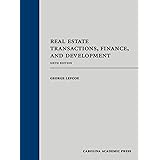When I speak to friends and acquaintances who’ve considered returning to Poland, or those thinking about property investment there, a common narrative often emerges. They frequently recount stories of rising costs, bureaucratic hurdles, and an increasingly challenging economic climate. The video above powerfully articulates many of these sentiments, offering a stark warning about the realities of living and buying a home in Poland today. It prompts a crucial question for anyone looking at the Polish market: are the reported “cheaper” prices truly a bargain, or are they a sign of deeper systemic issues?
The Illusion of Affordable Living: Buying a Home in Poland
The dream of property ownership is universal, yet the path to buying a home in Poland is becoming increasingly thorny. While some might perceive certain properties as undervalued, a closer look at the broader economic landscape suggests a more complex picture. The speaker in the video rightly points out that, despite appearances, Polish property values are often inflated relative to the average citizen’s purchasing power.
Navigating Sky-High Mortgage Rates and Property Prices
One of the most significant barriers to entry in the Polish housing market is the prohibitive cost of financing. Mortgage rates in Poland are alarmingly high, with the speaker noting rates around 8% for home loans. This figure is particularly distressing when compared to historical norms or rates in many Western European countries. Such high-interest rates, combined with loan terms stretching to 35 or even 40 years, transform a seemingly manageable purchase into a decades-long financial burden, bordering on what many would consider usury.
Moreover, the pricing of Polish real estate itself warrants scrutiny. The video suggests that property values are artificially inflated, partly due to a lack of a specific tax, akin to the Stamp Duty Tax seen in the UK, Spain, or Italy. This absence allows non-residents to invest in Polish properties without incurring a significant additional tax burden, potentially fueling speculation and driving up prices beyond what local incomes can sustain. In contrast, acquiring a £500,000 property in London, for instance, could incur a Stamp Duty Land Tax of around £50,000 for non-residents, a significant deterrent to speculative buying.
The Real Cost of Polish Property Ownership
Beyond the initial purchase, the long-term costs associated with Polish real estate ownership are substantial. High mortgage payments are just one facet. Energy costs, especially for gas, are a major concern, with some households facing bills of 2,000-3,000 PLN per month. While alternatives like solar panels exist, their installation cost (around 150,000 PLN) and potential for inefficiency or malfunction can quickly negate any long-term savings.
This dynamic creates a situation where the average Pole’s purchasing power for housing is severely diminished. The speaker highlights a staggering comparison: a Pole’s purchasing power is four times lower than that of a Briton, allowing the latter to afford a house while the former struggles to buy a 19-square-meter apartment. This disparity underscores the severe economic pressure on Polish families, making the prospect of buying a home in Poland a distant dream for many.
Unpacking Poland’s Fiscal Landscape: Taxes and Social Security Contributions
The challenges in Poland extend far beyond real estate, permeating the entire fiscal landscape. For individuals and businesses alike, the system of taxes and social security contributions (ZUS) is portrayed as exceptionally burdensome, creating an environment that actively discourages entrepreneurship and personal financial growth.
The Burden of ZUS for Entrepreneurs
A particularly harsh critique in the video targets Poland’s ZUS (Zakład Ubezpieczeń Społecznych) contributions. The speaker claims that Polish families, even if they earn no income from their business, can be forced to pay up to 1,000 EUR (or approximately 4,000 PLN) in ZUS contributions monthly for a couple. This obligation, regardless of profitability, is a significant hurdle for small business owners and freelancers. It stands in stark contrast to systems in other countries where social security contributions are often tied to actual income or profits, offering a safety net rather than a fixed liability.
Such a system, often described as an “administrative-tax hell,” effectively stifles innovation and entrepreneurship. It creates a high-risk environment for starting a business, as basic operating costs are substantial even before any revenue is generated. This can force promising ventures into early collapse or deter individuals from even attempting to start their own enterprises, impacting the overall economic outlook Poland.
Comparing Tax Regimes: Poland vs. Western Europe
The video draws sharp comparisons between Poland’s tax regime and those of countries like the UK and Spain, often highlighting Poland’s less favorable position. While specific tax types aren’t always detailed, the general assertion is that overall tax burdens, particularly for businesses, can be significantly lower elsewhere. For example, business taxes and ZUS contributions in Spain are claimed to be twice as low as in Poland, and general taxes in the UK are stated to be ten times lower.
These comparisons extend to purchasing power. Despite a minimum wage of around 820 EUR in Poland compared to 1,200 EUR in Spain, the speaker argues that the higher Spanish wage offers greater real purchasing power. In Spain, 1,200 EUR might cover rent and food, while 820 EUR in Poland would barely cover rent. This indicates that while nominal incomes might appear competitive, the actual cost of living and the fiscal demands in Poland erode disposable income much more aggressively, making it difficult to maintain a good quality of life.
A Wider Economic Lens: Employment, Pensions, and State Intervention
The discussion in the video then broadens to encompass systemic issues within Poland’s economy, touching upon employment realities, the sustainability of the pension system, and the distorting effects of state intervention in the market. These elements collectively paint a picture of an economy struggling with fundamental structural problems.
The Reality of the Polish Job Market
Contrary to popular belief, the speaker asserts that “good work” is hard to find in Poland. Many highly qualified individuals, even those with international experience, struggle to secure well-paying jobs. This suggests a job market characterized by exploitation, low wages, and a scarcity of opportunities, particularly for remote work or roles that offer substantial career progression. The high ZUS contributions and taxes further complicate the situation for employers, potentially limiting their ability to offer competitive salaries or benefits.
This creates a paradox: while economic growth figures might look positive on paper, the everyday reality for many Poles is one of struggle. The lack of robust job prospects, coupled with a high cost of living, discourages skilled workers from returning to the country or even remaining there, contributing to a brain drain that further undermines long-term economic stability.
Poland’s Challenging Pension System
The long-term sustainability of Poland’s pension system is presented as another critical vulnerability. The speaker claims that Poland has one of the youngest retirement ages in Europe, with individuals retiring after just 20 years of work, sometimes as early as 55 or 60. This is sharply contrasted with countries like the UK, where the retirement age is 67 (soon to be 68) after 30-40 years of work, or Denmark, with a retirement age of 70. This demographic imbalance, with a shrinking workforce supporting a growing number of retirees, is depicted as an unsustainable “financial kolkhoz.”
Furthermore, the video touches upon the controversial policy of providing social benefits, such as 200 EUR per child, to non-EU citizens upon arrival. While this policy is intended to be humanitarian, the speaker argues that it places an additional, unsustainable strain on the Polish social security system, which is already burdened by generous pension provisions. The concern is that these handouts, combined with early retirement ages, are funded by the current working generation, including future generations, through exorbitant social security contributions.
The Impact of State-Owned Enterprises and Social Spending
Government policies and the pervasive presence of state-owned enterprises (SOEs) are also heavily criticized. The speaker lambasts the influence of SOEs like Orlen, which compete directly with small, private Polish businesses in sectors ranging from convenience stores to restaurants. This unfair competition, fueled by state backing, is seen as destroying local entrepreneurship and preventing a healthy, competitive market from developing.
The broader pattern of government spending, characterized by increasing social benefits (like the “800+” program, up from “500+”) and a growing bureaucracy, is blamed for the high taxes and ZUS contributions. The argument is that these populist measures, designed to win elections, come at the cost of the common citizen’s financial well-being and the nation’s long-term economic health. This cycle of increased spending leading to higher taxes and a struggling private sector contributes to the overall perception of Poland as an “economic trap.”
Beyond the Numbers: Quality of Life and Future Prospects in Poland
Ultimately, the discussion circles back to the quality of life and future prospects for those considering living in Poland. The economic and fiscal challenges have tangible impacts on daily life, prompting many to look beyond Poland’s borders for a more stable and prosperous existence.
The Cost of Everyday Life and Energy
Beyond housing and taxes, the general cost of living in Poland is a significant factor. While the video humorously highlights the affordability of potatoes in Poland (around 1 PLN per kg compared to 5 PLN in Spain, making them 500% cheaper), this is presented as an anomaly in an otherwise expensive landscape. Essential utilities, particularly heating costs during the cold Polish winters, pose a substantial financial strain. The ongoing geopolitical situation further exacerbates energy price volatility, adding another layer of uncertainty for households and businesses.
This contrasts sharply with regions like Cartagena in Spain, where milder climates mean lower heating costs and, crucially, a higher quality of life characterized by pleasant weather for a greater portion of the year. The appeal of such locations, offering warmth and potentially lower overall living expenses, draws attention away from the increasingly challenging environment in Poland.
Considering Alternatives: Rental Markets in Southern Europe
For those disillusioned with the prospects of property investment Poland, the video points towards alternative strategies, such as renting abroad or investing in more liquid assets like gold or stocks. The speaker provides compelling examples from Cartagena, Spain, showcasing attractive rental opportunities. Properties near the beach, ranging from 40 to 90 square meters, are advertised for 400-490 EUR per month. Even with an additional 200 EUR for utilities, the total monthly cost of 600-650 EUR is remarkably competitive, often cheaper than renting a comparable apartment in major Polish cities, where 90 square meters could cost 5,000 PLN (plus 2,000 PLN utilities), totaling 7,000 PLN (roughly 1,600 EUR).
This comparison starkly illustrates the disparity in real affordability and quality of life. The ability to rent a modern, well-located apartment in a warmer climate for significantly less money, coupled with potentially lower taxes and business costs, presents a powerful argument for considering options outside of Poland. It underscores the sentiment that for many, buying a home in Poland or even settling there, is currently not the most financially sound or lifestyle-enhancing decision.









